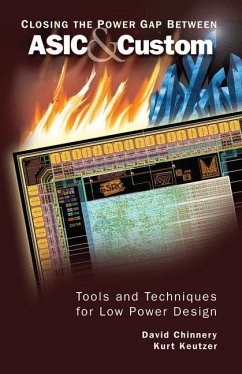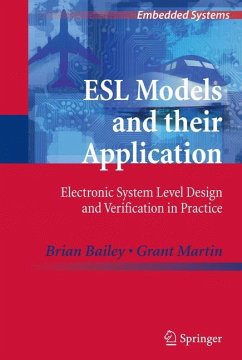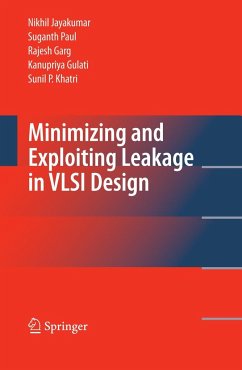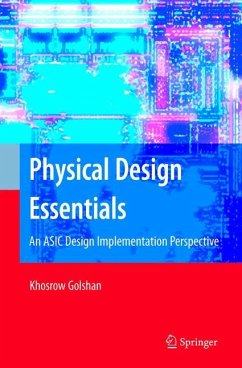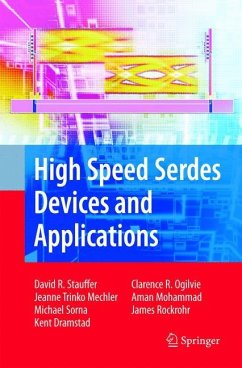
Quantifying and Exploring the Gap Between FPGAs and ASICs
Versandkostenfrei!
Versandfertig in 6-10 Tagen
76,99 €
inkl. MwSt.
Weitere Ausgaben:

PAYBACK Punkte
38 °P sammeln!
The book focuses on the cost/area, performance and power consumption differences between Field-Programmable Gate Arrays (FPGAs) and Application Specific Integrated Circuits (ASICs). These differences are referred to as the gap between FPGAs and ASICs and knowledge of this gap is fundamental for people who design FPGAs, who use FPGAs, or who are considering their use. This book reviews and examines the gap in two ways.
The first portion of the book focuses on measurements of the silicon area, performance, and power consumption gap. This is done by comparing designs implemented on a commercial FPGA and using an ASIC methodology. Through this comparison, various trends are noted to elucidate some of the design choices that can narrow the gap.
The latter half of the book focuses on the trade-offs that can be made in the creation of a FPGA to narrow the gap selectively. This is useful because silicon area, performance and power consumption are not equally important to all users of FPGAs. The book describes the approach used to investigate these trade-offs and it includes a detailed description of the transistor sizing tool developed to assist in this investigation. The scope of the trade-offs is then examined and the effect of these trade-offs on the FPGA to ASIC gap is considered. The idea of making cost and performance trade-offs has been considered in past works but this book explores the use of transistor-sizing to enable these trade-offs.
The first portion of the book focuses on measurements of the silicon area, performance, and power consumption gap. This is done by comparing designs implemented on a commercial FPGA and using an ASIC methodology. Through this comparison, various trends are noted to elucidate some of the design choices that can narrow the gap.
The latter half of the book focuses on the trade-offs that can be made in the creation of a FPGA to narrow the gap selectively. This is useful because silicon area, performance and power consumption are not equally important to all users of FPGAs. The book describes the approach used to investigate these trade-offs and it includes a detailed description of the transistor sizing tool developed to assist in this investigation. The scope of the trade-offs is then examined and the effect of these trade-offs on the FPGA to ASIC gap is considered. The idea of making cost and performance trade-offs has been considered in past works but this book explores the use of transistor-sizing to enable these trade-offs.
Field-programmable gate arrays (FPGAs), which are pre-fabricated, programmable digital integrated circuits (ICs), provide easy access to state-of-the-art integrated circuit process technology, and in doing so, democratize this technology of our time. This book is about comparing the qualities of FPGA - their speed performance, area and power consumption, against custom-fabricated ICs, and exploring ways of mitigating their de ciencies. This work began as a question that many have asked, and few had the resources to answer - how much worse is an FPGA compared to a custom-designed chip? As we dealt with that question, we found that it was far more dif cult to answer than we anticipated, but that the results were rich basic insights on fundamental understandings of FPGA architecture. It also encouraged us to nd ways to leverage those insights to seek ways to make FPGA technology better, which is what the second half of the book is about. While the question "How much worse is an FPGAthan an ASIC?" has been a constant sub-theme of all research on FPGAs, it was posed most directly, some time around May 2004, by Professor Abbas El Gamal from Stanford University to us - he was working on a 3D FPGA, and was wondering if any real measurements had been made in this kind of comparison. Shortly thereafter we took it up and tried to answer in a serious way.






